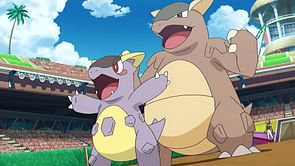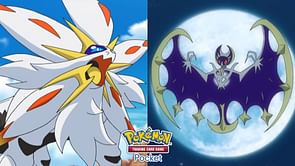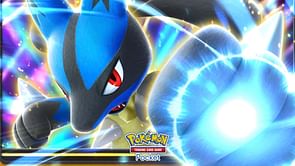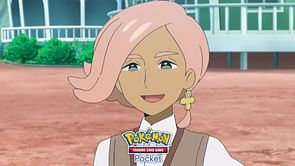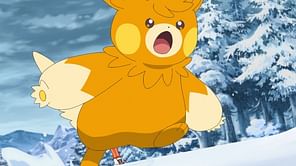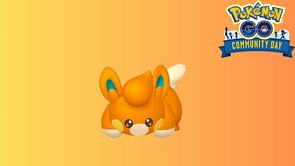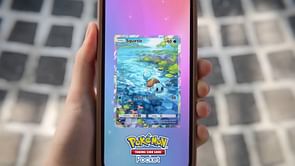Introduced in generation seven, with the Pokemon Sun and Moon games, Palossand is a dual type ghost and ground Pokemon. It is the final evolution of its two stage evolution line and evolves from Sandygast once it reaches the level threshold. Palossand is classified by the Pokedex as the “Sand Castle Pokemon” which is likely a reference to its general design. This guide will showcase Palossand’s capabilities in battle, its appearances in the anime, as well as other general facts about Palossand.
About Palossand
As a generation seven Pokemon, Palossand first appeared in the Sun and Moon Series of the anime in the episode A Shivering Shovel Search!. In this episode, a Sandygast evolves into a Palossand, trapping Ash inside of it. The Pokedex mentions that underneath Palossand are dried-up bones of those that Palossand have drained.
| First appearance in anime | Pokemon the Series: Sun & Moon A Shivering Shovel Search! |
| First appearance in game | Pokemon Sun and Moon |
| Region | Alola |
| Evolution | Evolves from Sandygast, not known to evolve into another Pokemon |
| 1st Evo level | 42 |
| 2nd Evo level | N/A |
| Pokedex Entry | Possessed people controlled by this Pokémon transformed its sand mound into a castle. As it evolved, its power to curse grew ever stronger. |
Palossand Base Stats
| HP | 85 |
| ATTACK | 75 |
| DEFENCE | 110 |
| SP. ATTACK | 100 |
| SP. DEFENCE | 75 |
| SPEED | 35 |
| TOTAL | 480 |
Appearance
Palossand is a large brown Pokemon that resembles a living sandcastle. Most of its body is brown but there are black and gray markings around its arms and head to imply a tower window. Its center mass seems like a castle gate and its two arms seem like two towers with two yellow eyes above its open mouth. In the games, Palossand has a small shovel sticking out of the top of its head. Palossand is an average sized Pokemon at 4 feet and 3 inches, or 1.3 meters, tall.
Behavior
Each individual grain of sand in Palossand’s body is actually independent. They gather together and force adults to build them into a sand castle. It uses this appearance as a disguise as well as a way to defend itself. The Pokedex mentions that the small shovel on its head can sense prey and it functions like a radar. Palossand will lure people and Pokemon close to drain its life essence. It can also change its size up to the size of a building and is incredibly heavy despite being made of sand at 551 lbs, or 250 kg.
Strengths and Weaknesses
Palossand is typically considered a defensive Pokemon. With its high physical defense and decent special defense, it can last for a while in a prolonged battle. Palossand does have a slow speed stat but its special attack stat makes its attacks feel significant. With its Water Compaction ability, Palossand can raise its physical defense any time it is hit by a water type move. As a dual type ghost and ground Pokemon, Palossand takes 2x damage from ghost, water, grass, ice, and dark type moves. It is immune to normal, fighting and electric type moves, and is also resistant to poison, rock, and bug type moves.
Best Moveset
While Palossand is not rated highly in competitive play, it can function as a defensive Pokemon. Its access to setting up hazards, its signature move keeping its health high and its high special attack make Palossand useful in battle. With a Colbur Berry, as a held item, Water Compaction as its ability and its strong defensive type, Palossand can last a long time in battle. Consider running Stealth Rock, Earth Power, Shadow Ball, and Shore Up. This moveset is aimed at setting up hazards on your opponent’s side of the field, and using Shore Up to keep Palossand healthy. Earth Power and Shadow Ball are to cover as many types as possible while still offering the Same Type Attack Bonus effect.
| Stealth Rock | Earth Power |
| Shadow Ball | Shore Up |
How to Catch Palossand in Pokemon Go?
Unfortunately, Palossand has not been released in Pokemon Go and in fact, the only Pokemon from Generation seven to debut in Pokemon Go are Meltan and Melmetal. Palossand will most definitely come to Pokemon along with the other Alolan Pokemon. The developers also have to finish releasing generation six Pokemon, so it could take a while before we see Palossand in the game. Until then, we will not know if it hatches from eggs, how many candies it will require for evolution, or if it will be available as a raid boss.
Trivia
- The inspiration for Palossand’s design is likely based on sandcastles. Its shiny variant could also be based on black sand.
- The name Palossand is a combination of the words palace, loss, and sand.
FAQ
What is the evolution of Palossand?
Palossand is the final evolution in its evolution line. It evolves from Sandygast once it reaches level 42, but Palossand itself does not evolve further. There are no conditions to fulfill for evolution, and once Sandygast has evolved into Palossand you have finished collecting the Pokemon’s evolution line.
What is Palossand’s ability?
Palossand can come with two different abilities. It can have Water Compaction or Sand Veil. Water Compaction makes it become bulkier when it is hit with a water type move. Its Sand Veil ability will raise its evasiveness while in a sandstorm. This can synergize with its signature ability Shore Up as the healing is increased during a sandstorm.
Is Palossand good in competitive play?
While Palossand is not rated highly on tier lists, it is still a decent Pokemon. Its biggest weakness is its slow speed and split defensive stats. If its special defense were as high as its physical defense, Palossand would be much more reliable. Unfortunately, it has a few exploitable weaknesses keeping it from being a top tier Pokemon.
Conclusion
Congratulations, you now know just about everything there is to know about this “Sand Castle Pokemon”. While Palossand may not have had the largest impact on competitive play, it can still prove to be a formidable Pokemon. Its high special attack matched with decent resilience makes sure that Palossand can deal significant damage over time. Reserve a slot on your team for Palossand for a bulky dual type ghost and ground Pokemon.
